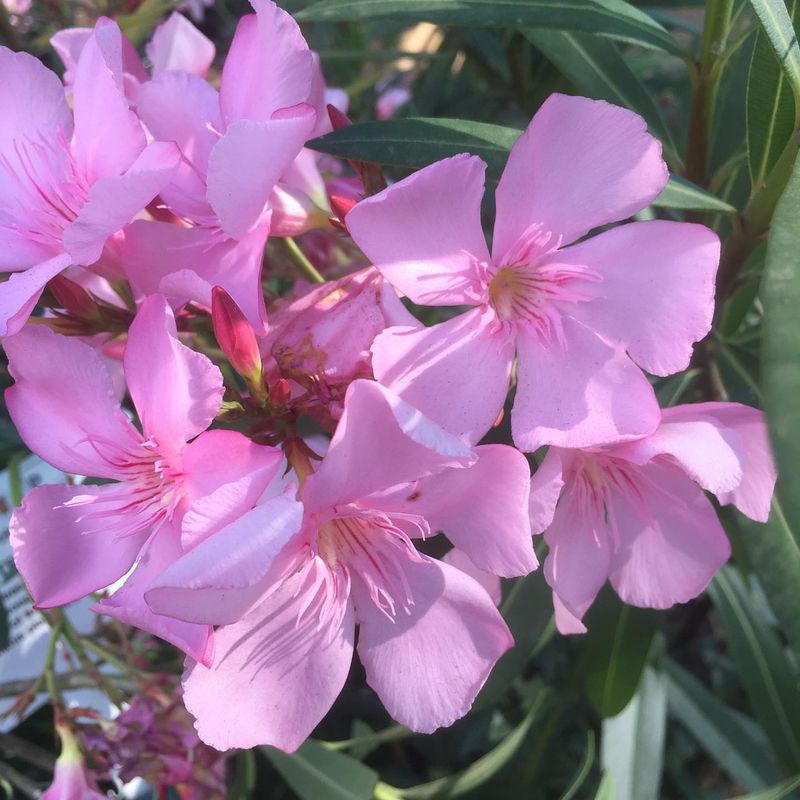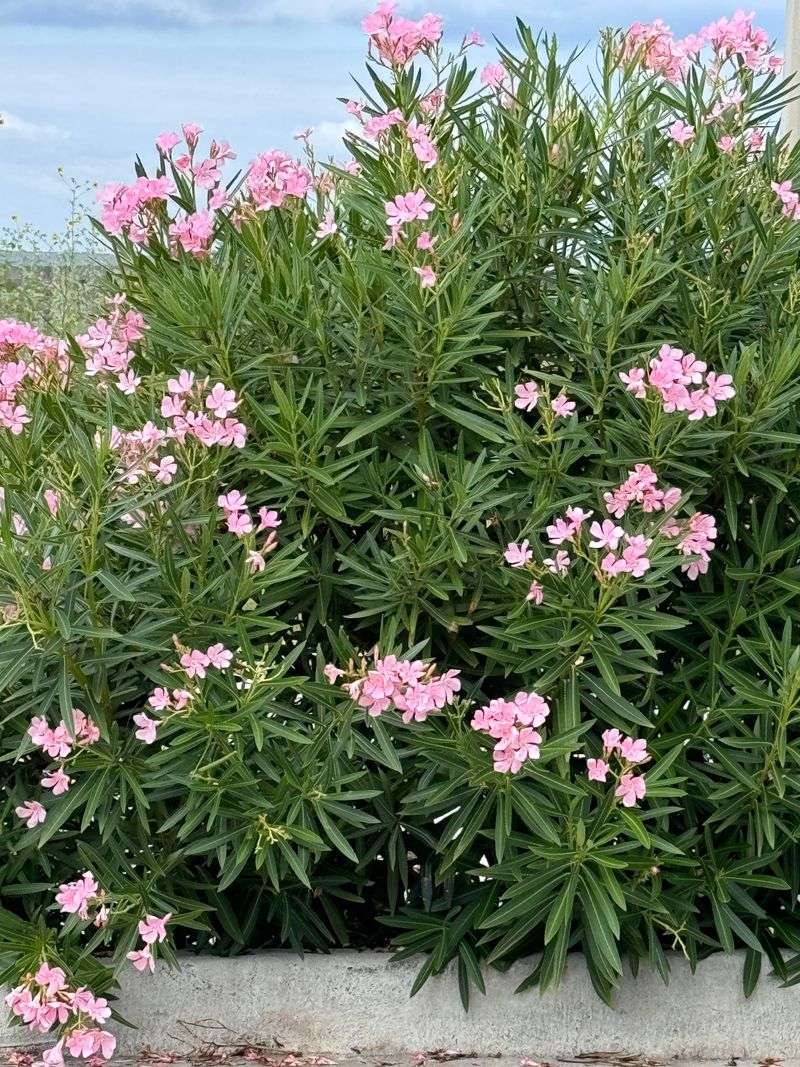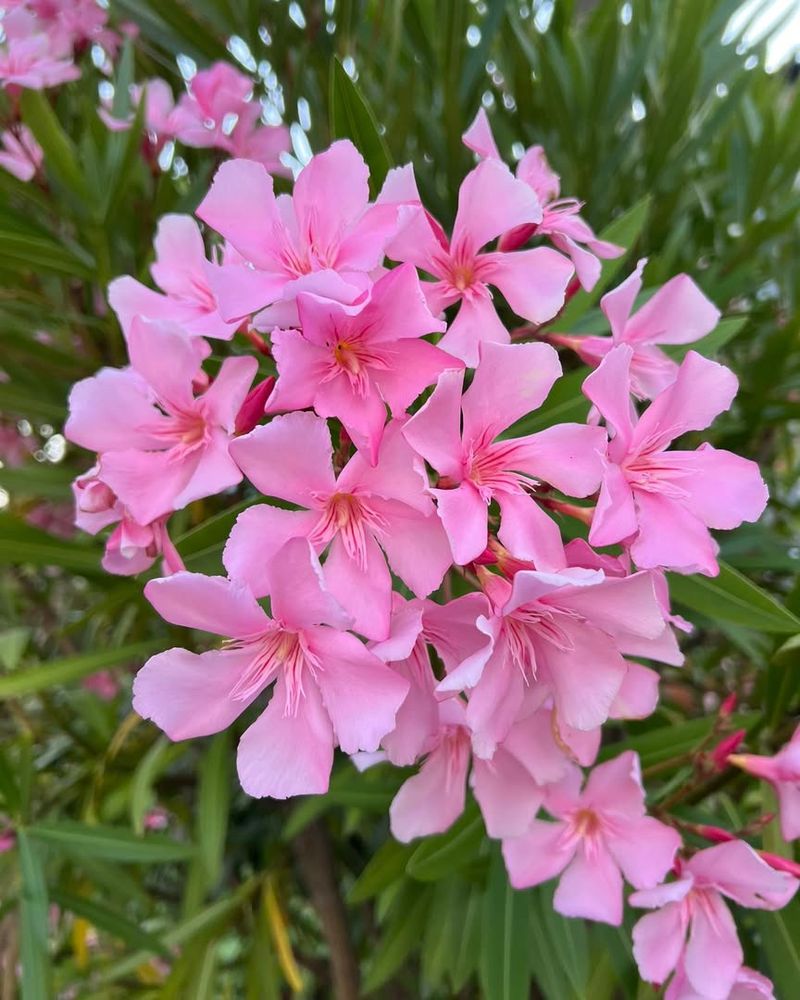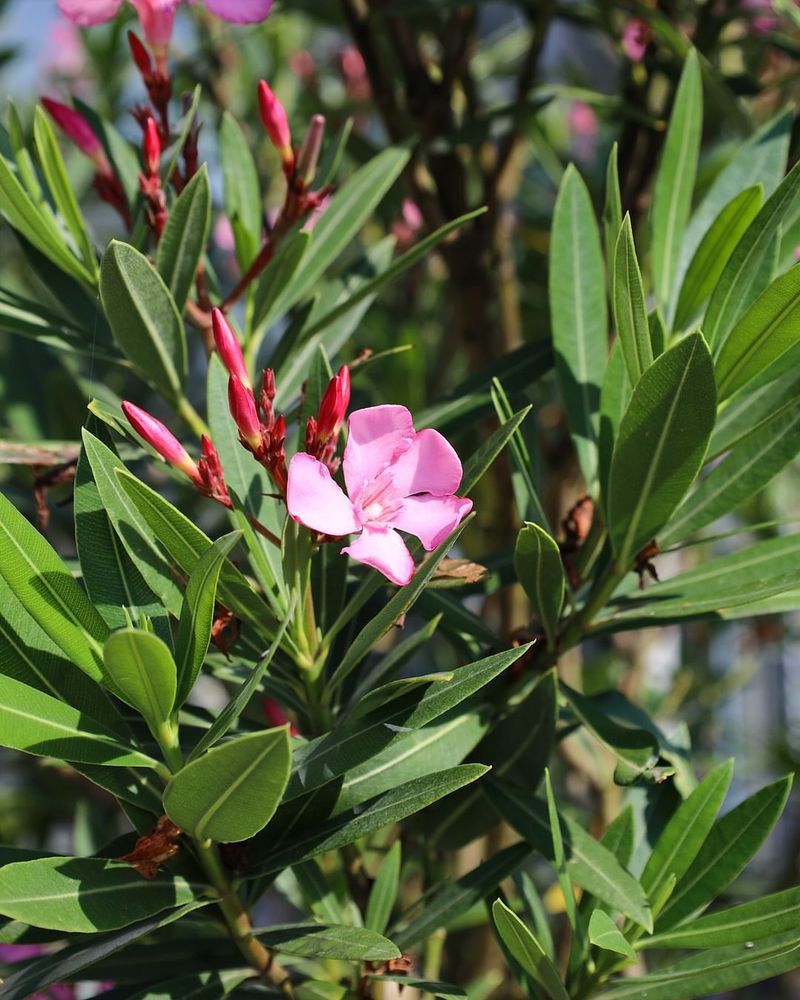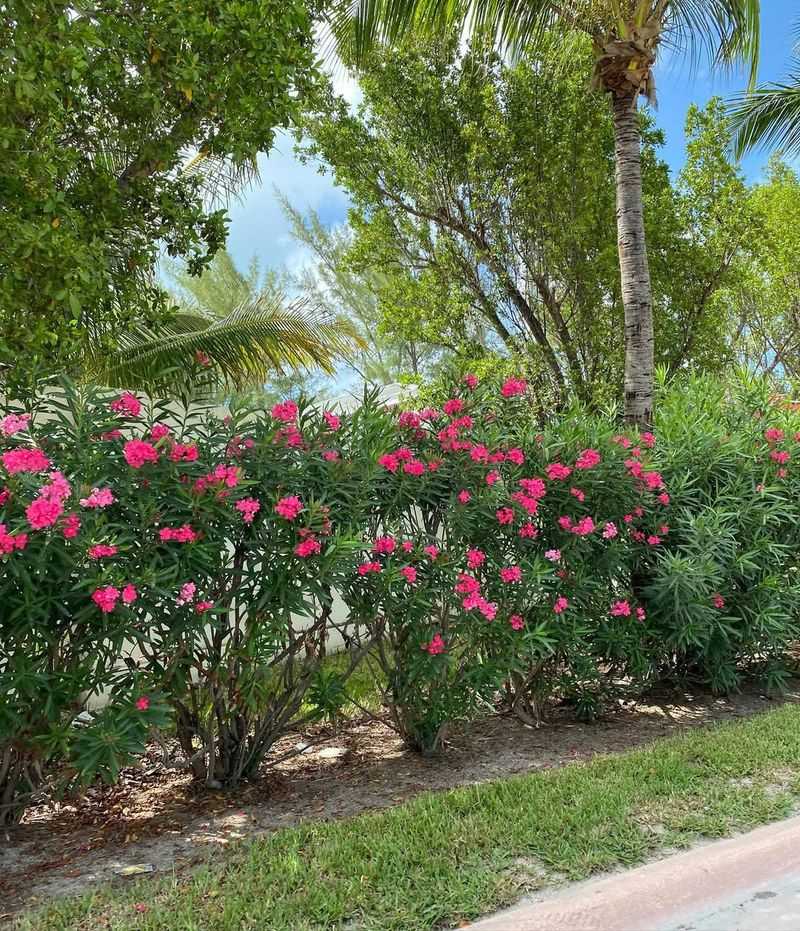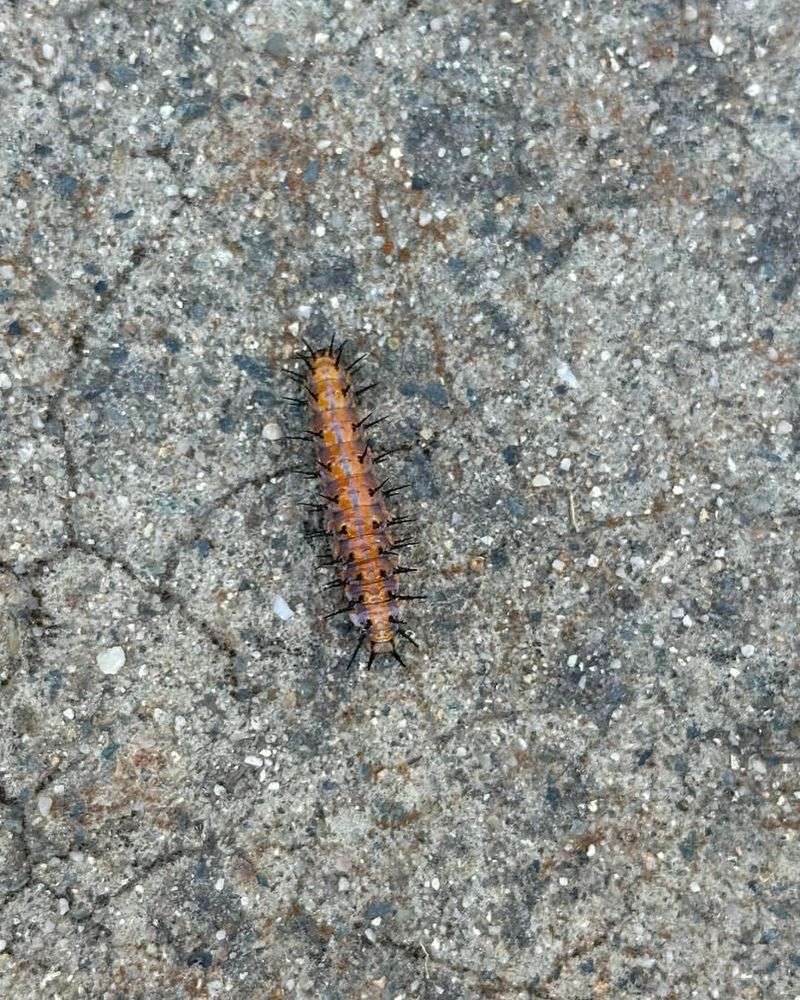In the heat and dust of Nevada’s landscape, one shrub stands out for its resilience and its stunning color. With tough roots and vibrant pink blossoms, it brings life and beauty to even the driest corners of the yard.
Gardeners across the state rely on oleander, a hardy evergreen that thrives in heat, resists drought, and delivers eye-catching blooms well into fall.
1. Thrives In Extreme Desert Heat
Nevada summers can be brutal, with temperatures soaring past 100 degrees, yet oleander handles the heat like a champion. Most plants wilt and struggle when the sun beats down relentlessly, but this shrub actually loves the warmth.
Its thick, leathery leaves help it retain moisture even during the driest months. Oleander has adapted perfectly to desert conditions, making it an ideal choice for yards where other flowering plants simply cannot survive the intense climate.
2. Produces Stunning Pink Flowers
From late spring through fall, oleander puts on a spectacular show with clusters of bright pink blooms that catch everyone’s eye. Each flower has five delicate petals arranged in a cheerful pinwheel shape.
The blooms keep coming for months, providing consistent color when many other plants have stopped flowering. Some varieties also produce white, red, or yellow flowers, but the classic pink remains the most popular choice for Nevada homeowners seeking reliable beauty.
3. Requires Minimal Water Once Established
Water conservation matters in Nevada, and oleander earns high marks for its drought tolerance after the first year. Once the roots grow deep into the soil, this shrub needs watering only every week or two during summer.
Compare that to thirsty grass lawns that demand daily watering, and you can see the savings add up quickly. Many homeowners appreciate having a beautiful landscape without watching their water bills skyrocket or feeling guilty about excessive water use.
4. Contains Toxic Compounds Throughout
Every part of the oleander plant contains poisonous substances that can harm people and animals if eaten. Parents with young children and pet owners need to consider this serious safety concern before planting.
Even smoke from burning oleander branches can cause health problems. Despite its dangers, many.people in Nevada still choose oleander because they understand the risks and take proper precautions, keeping kids and pets away from the shrubs and teaching family members never to touch or taste any part.
5. Grows As A Natural Privacy Screen
Oleander can reach heights of 12 to 20 feet when left unpruned, creating an excellent living wall between properties. The dense foliage blocks unwanted views while adding gorgeous color to boundary lines.
Many neighborhoods use oleander hedges along streets and sidewalks because they look attractive while reducing noise and dust. Regular trimming keeps the shrubs at whatever height works best for your space, whether you want a tall screen or a shorter decorative border around your Nevada yard.
6. Resists Most Common Pests
Gardeners love plants that do not need constant spraying and fussing, and oleander fits that description perfectly. The same toxins that make it dangerous to eat also keep most insects and animals from munching on the leaves.
Aphids occasionally appear but rarely cause serious damage. Caterpillars from the oleander hawk moth sometimes feed on the foliage, yet the plant usually recovers quickly without intervention, saving you time, money, and effort on pest control products for your Nevada yard.
7. Adapts To Various Soil Types
Whether your yard has sandy soil, clay, or rocky ground, oleander manages to grow successfully without much complaint. This flexibility makes it valuable for Nevada homeowners dealing with challenging soil conditions.
The plant tolerates alkaline soil common throughout the state, unlike many flowering shrubs that demand specific pH levels. Good drainage matters most, but oleander forgives occasional poor soil quality better than most ornamental plants, allowing you to enjoy beautiful blooms without extensive soil amendments.


